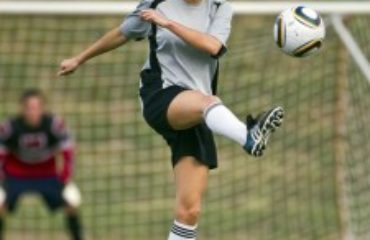The Achilles tendon attaches three different calf muscles to the heel. It provides important stability for higher-speed walking and running as well as jumping. However, being close to the skin and confined in a narrow space behind the ankle, it can be vulnerable to injuries. Athletes in particular sometimes develop two main types of problems with the Achilles tendon: inflammation (tendonitis) or tearing (rupture).
Achilles tendonitis tends to develop from overuse. While overuse can also increase vulnerability to rupture, this more severe type of injury is more likely to come from a sudden impact or similar kind of trauma. Sudden activity after longer idle periods can increase vulnerability to this kind of injury. Achilles tendon rupture tends to be more common in high-impact or high-intensity sports.
For both of these types of injuries, there are different types of treatment available, depending on the severity of injury and patient preference. Tendonitis in particular needs proper attention and rest in order to avoid becoming more serious or rupturing.
Cold compression: Applying ice packs or other types of cold compresses will help reduce pain and swelling. Cold combined with elastic bandages or other forms of compression can also be useful, although too much compression can inhibit circulation, which will slow healing. This is better for acute treatment than for chronic pain.
 Heel pads: Using a wedge in the heel of ordinary shoes will help reduce stress on the tendon by lifting up the heel, which keeps the tendon from stretching out as much. In general, properly supportive footwear—especially in sports—will help with both treatment and prevention.
Heel pads: Using a wedge in the heel of ordinary shoes will help reduce stress on the tendon by lifting up the heel, which keeps the tendon from stretching out as much. In general, properly supportive footwear—especially in sports—will help with both treatment and prevention.
Medication: For tendonitis, over-the-counter painkillers can be helpful, although the injury itself is due to degeneration rather than inflammation. Higher-level painkillers aren’t generally recommended. Steroids are sometimes used for tendonitis, but are not always recommended because they can increase the risk of rupture.
Physical therapy/rehabilitation: Stretching exercises will help maintain function, especially in treating ruptures. Strengthening calf muscles and maintaining flexibility will help as a long-term treatment for both acute and chronic pain. Overuse injuries are more likely in patients who haven’t stretched or prepared well, so physical therapy is especially important in preventing re-injury. Range of motion stretching is an important part of early rehabilitation following surgery, and is followed by weight-bearing and strengthening exercises.
Casts/boots: Complete immobilization isn’t as recommended as it used to be, largely because it risks problems with atrophy and stiffness in further rehabilitation. For rupture, removable fixed or hinged boots can still be used as protection during rehabilitation and recovery as an alternative to surgery.
Surgical options: Severe ruptures are generally treated with open surgery or with percutaneous surgery, which uses multiple smaller incisions. The tendon is stitched back together, and in complete ruptures will be reinforced with a graft from another tendon.
For any level of Achilles tendon injury, proper diagnosis and treatment will help improve the speed of your recovery and will improve your chances of not being injured again. An orthopedics professional can help determine what the best course of action will be for you.



